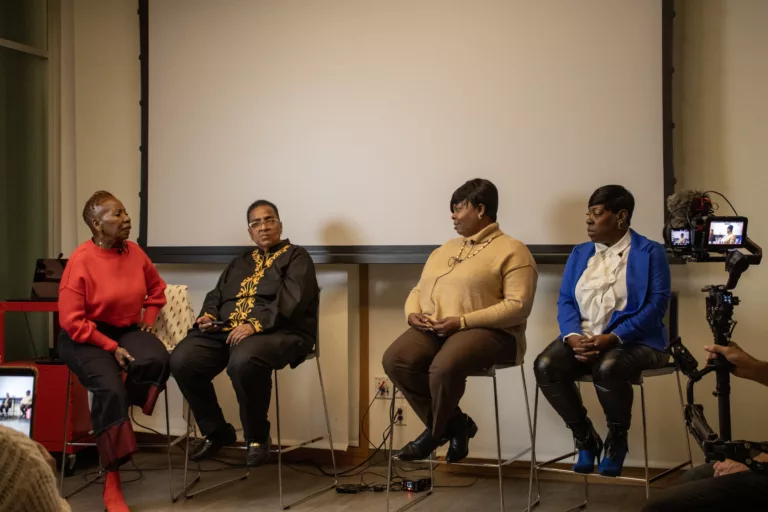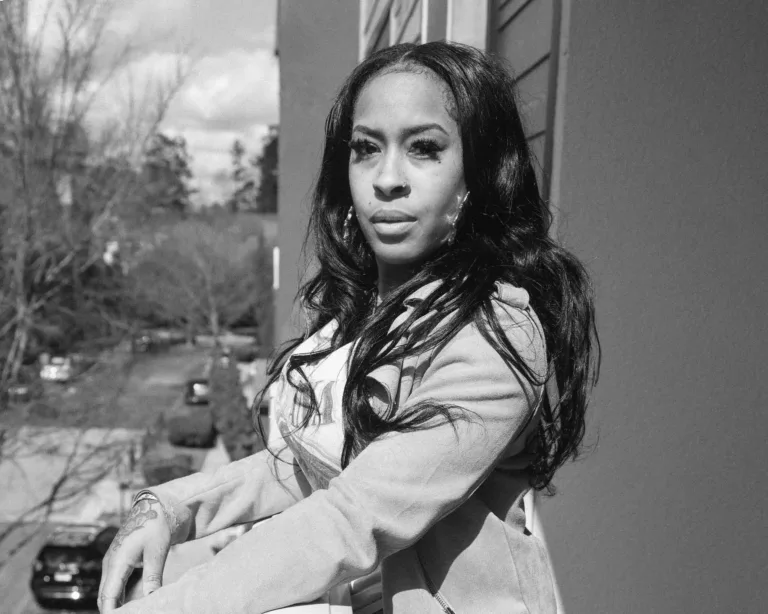Few reentry programs exist to support women during and after prison
By Rebekah Sager

When Roslynn Calhoun was released from a Georgia prison last year, she needed help rebuilding her life after 15 years behind bars. She knew not to expect anything from the state.
“I walked out with $25 and a goodbye,” says Calhoun, 53. “No packet to help me or a list of resources and places I could go.”
Her family picked her up from Lee Arrendale State Prison north of Atlanta. On the 90-minute ride home to suburban Atlanta, she used the $25 on her state-issued credit card to buy snacks for her grandchildren. It was her first time treating them.
She welcomed support from nonprofit organizations, including Barred Business, co-founded by her friend Bridgette Simpson, to help formerly incarcerated women of color find work and housing and restore their voting rights. Simpson and Calhoun met in prison, where they organized women to advocate for themselves.
Simpson hired Calhoun as her executive assistant a few months after she was released from prison. But it’s still been a rough road to re-entry, says Calhoun, speaking for thousands of people involved with a system that incarcerates more people than any other country in the world.
Over the last four decades, the number of women in prisons and jails has exploded, increasing by over 525%, according to the Sentencing Project, which advocates for decarceration and addressing racial disparities in the criminal justice system. The incarceration rate for Black women is almost double that of white women; the rate for Latinx women was slightly lower than that of Black women, according to the Sentencing Project.
Men are still the largest population behind bars, but the incarceration rate for women has grown faster than for men since 1980. Unlike men, women are typically convicted of drug offenses, nonviolent crimes and crimes related to domestic abuse and poverty. They’re often co-defendants with their husbands or partners. And almost 60% of women in prison have children under the age of 18, forcing them, in most cases, to rely on grandmothers and aunties to raise their children.
Yet, the system has few programs that meet women’s needs during and after incarceration.
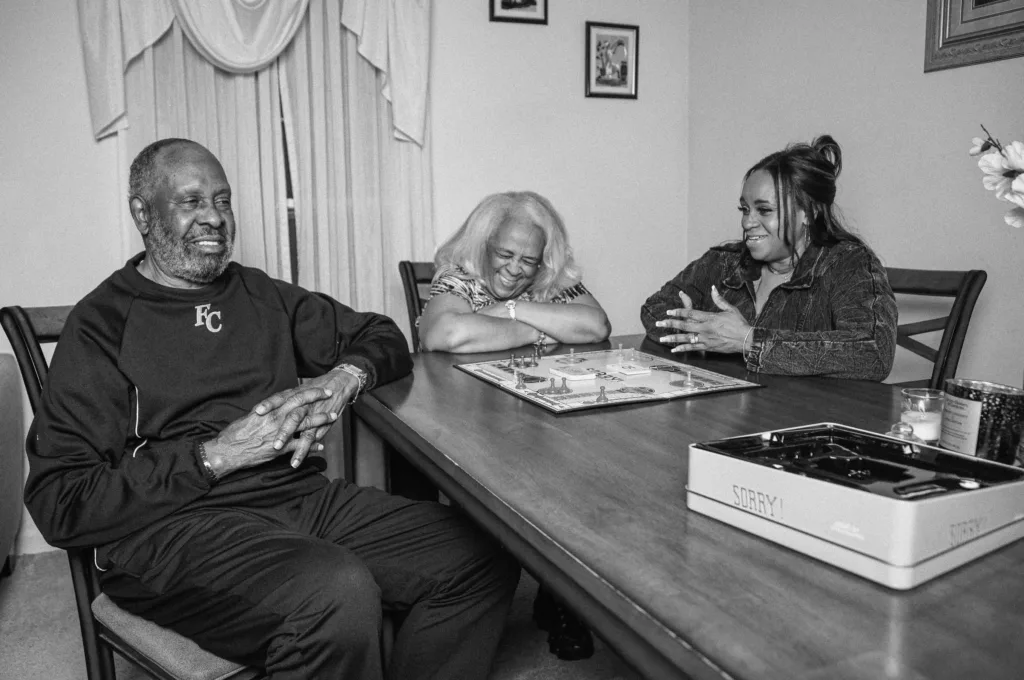
“The available resources [when you get out] are from formerly incarcerated people with organizations trying to help people not go down that road. The system is not helping you,” says Calhoun, who lives with her parents. “They don't care if you can't pay your light bill. They don't care if you can't pay your mortgage. They don't care if you don't have any food.”
The rise in the incarceration rate for women between 1980 and 2021 isn’t surprising in the context of a racialized and inhumane U.S. criminal justice system, say abolitionists and critics of the system.
“The mean-spirited criminal legal system caught up with women,” says Dr. Beth Richie, head of the Department of Criminology, Law and Justice and a professor of African American Studies at the University of Illinois Chicago.
The carceral state targets women in the same way as men, Richie says, but there are differences. Women are victims of the “criminalization of gender violence, the criminalization of parenting and the criminalization of low-level drug offenses,” she says. As a result, women are more likely to be “co-opted into participating and criminalizing themselves because they are protecting a co-defendant.”
Mandatory sentencing minimums imposed by Congress have increased punishment for low-level drug crimes, sweeping more women into the system. In the past decade, the number of women serving longer sentences has risen significantly, according to a 2021 Sentencing Project report. Since 2008, the number of women serving life without parole has grown 43%. Women of color are disproportionately affected.
“A lot of the women that I work with have drug crimes. Many of them are for methamphetamine. And methamphetamine carries a very high mandatory minimum. So most of the women we work with likely have a mandatory minimum of 10 years,” says Shanna Rifkin, deputy general counsel at the Families Against Mandatory Minimums.

A dehumanizing system
Chloe Aquart, associate director of operations at the Vera Institute, which seeks to end mass incarceration, says incarcerated men and women experience the same thing: “dehumanization.”
“You can't say that it's better or worse because of your gender expression, but people in women's facilities experience unique challenges,” she says, like the daily indignities of not having enough feminine hygiene products or wearing used and ill-fitting bras and panties.
They are separated from their children and experience gender-based violence. The training programs are typically geared toward domestic skills and cosmetology, says Aquart, ticking off a list of inequities.
State prison programming budgets are often significantly smaller for women’s facilities than for men’s because there are more men incarcerated, she says.
Although nearly 90% of women commit survival crimes related to poverty or domestic abuse, there are barely enough programs to provide therapeutic support or job training when women are in prison and when they leave, says Pamela Winn, 55, founder of RestoreHer. The national nonprofit based in Georgia advocates for “justice-impacted” women of color.
Winn, who was incarcerated for more than six years, says mental health services behind bars offer medication but rarely on-site licensed providers. She says correctional officers often ignore requests to see a psychologist or psychiatrist because they assume the women are “faking” symptoms or “you’re a criminal and can’t be trusted.”
Caring for the children
The Prison Policy Initiative reports that when incarcerated mothers are separated from their children, they experience higher rates of depression, anxiety, and suicidal thoughts.
Most women place their children with family or friends when they’re incarcerated; a small percentage of children land in foster care because their parents don’t have relatives who can care for them.
About 4% of women are pregnant when they’re incarcerated, forced to experience the pain of giving birth and giving their newborn away within days.
There are some prisons with nurseries. Incarcerated women have between one month and two and a half years to parent an infant if they didn’t commit a violent crime or neglect and abuse a child. Because “all women don’t qualify,” the programs “can cause contention among them,” Winn says.
When Winn first entered a Georgia prison in 2008, she learned she was pregnant. A few weeks later, a shackled Winn tripped and fell on the way to a routine court hearing. As a registered nurse, she knew she needed to be seen by a physician. Even after she began spotting blood, she didn’t see an obstetrician or have an ultrasound for weeks. About 20 weeks into her pregnancy, Winn miscarried in her cell.
“When I talk about my story, I'm one of a thousand. And although my story sounds horrific, it's not the worst,” says Winn, whose nonprofit was instrumental in the passage of the First Step Act in 2018, sweeping federal legislation that placed restrictions on the use of restraints for incarcerated pregnant women, among other things.
Before the First Step Act, women who gave birth behind bars were typically shackled to the bed during labor. Despite the law, advocates say shackling is still occurring in some federal facilities, according to Slate.
Winn’s sons were 14 and 16 when she was convicted. She had no family support. So, when she was incarcerated, she left them alone.
She says she counts herself lucky. When she was released from prison in 2013, her sons had graduated high school and were attending college. They had raised each other.
Roslynn Calhoun left her four children—three daughters and a son—with her parents when she went to prison. In 2007, she and her husband, with whom she is separated, were convicted of armed robbery for allegedly holding up stores in the Atlanta area. Calhoun was the lookout.
She had lost her job. Her husband’s income wasn’t coming in. They were desperate and not thinking, she says.
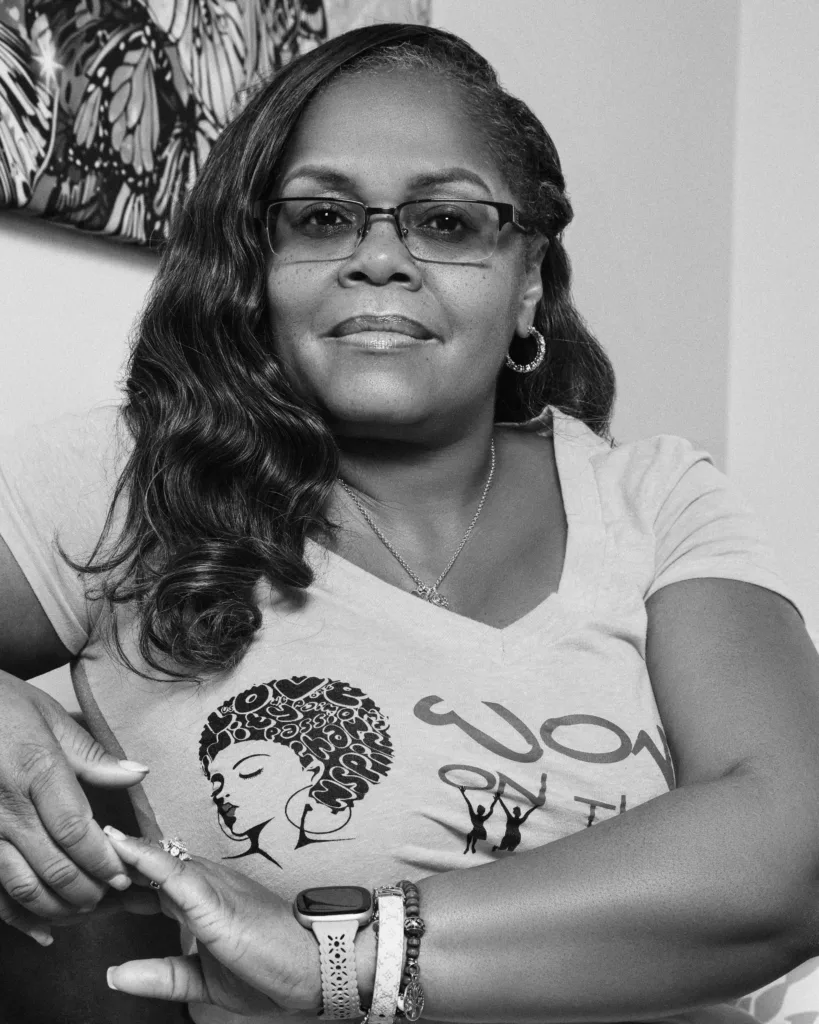
During her 15 years in prison, her ability to see her children, who were 18, 14, 10 and 6 when she was incarcerated, dwindled from once a month to every three months, and as they got older, only phone calls.
“Even with the phone calls and visits, you still don't have that full connection. Because if you were home every day, you're going to know the favorite food, you're going to know the favorite color, you're going to know what kind of ice cream they want. Even when I got home, it was like you know your children, but still, you don't know your children,” Calhoun says.
Rebuilding, and, in some cases, building relationships with their children, is a vital part of coming home for women. Some formerly incarcerated women are creating their own programs to support their needs.
Like Winn and Simpson, Robyn Hasan-Simpson, 48, acted on her frustration with the lack of reentry programs. As the executive director of Women on the Rise, she supports formerly incarcerated women and advocates for changes in the criminal justice system.
When Hasan-Simpson was released from Georgia’s Pulaski State Prison in 2020 after 10 years, she says she had nowhere to live. She didn’t have family in the state and could not find housing. Her mother had cared for her daughter, who was 7 when Hasan-Simpson was incarcerated.
“I went from 10 years being incarcerated, [to] come home homeless, and then have to go live in a shelter until I was able to find a room to rent. So that was the journey I went through, and still trying to build a relationship with my daughter because that's all I thought about,” Hasan- Simpson says.
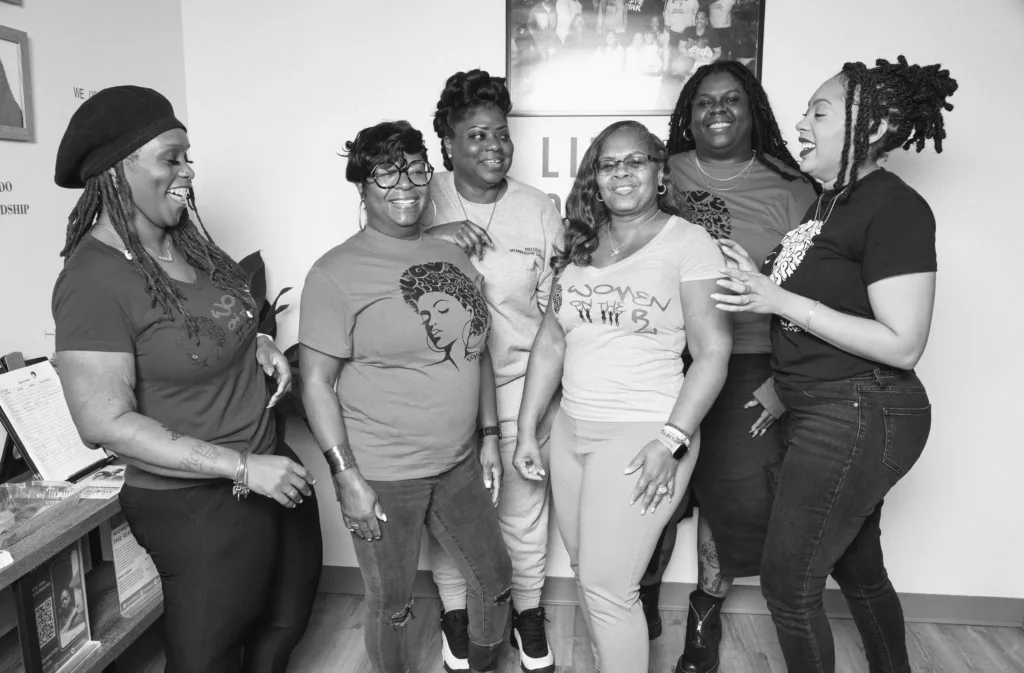
A system built on the backs of enslaved people
While they organize for change, advocates for incarcerated and formerly incarcerated people question whether you can reform a system rooted in the exploitation of Black bodies.
The history of today’s carceral system is directly linked to the 13th Amendment to the U.S. Constitution, which made slavery or servitude acceptable as punishment for a crime, says Aquart of the Vera Institute.
“All the vestiges of slavery were packed into that one part of our Constitution that allows for the continued enslavement of people through this guise of criminal justice,” Aquart says. “That continues to disproportionately affect Black and brown people in this country by design. So what we have now is the remnants of a country built off the backs of slaves, continuing to prosper off of the treatment of Black and brown people.”
Carla Laroche, an associate professor of law at Tulane Law School, says Michelle Alexander’s book “The New Jim Crow” highlights the systems, institutions and individuals who sought to incarcerate Black men and women for various reasons—racism, sexism, profit.
“We focus a lot on the incarceration of Black men in terms of ‘convict leasing,’ but there were Black women who were also incarcerated and forced to work,” Laroche says.
She doesn’t believe the criminal justice system can be fair to incarcerated people.
“I don't think that we can fix a system that is working exactly as it was established to do,” Laroche says. “But for those who are ensnared in it, what can we do that doesn’t make the system larger and also ensures that the humanity of individuals is recognized? I cannot see a way to get to real justice without abolishing it, but until that point, we'll work toward [those] goals.”
Calhoun agrees. The system has taken much from her and others, and what has it changed?
“Mass incarceration is not helping the country, it’s not helping communities, it’s not helping individuals, it’s not helping families,” she says.
Rebekah Sager is an award-winning journalist and author with over a decade of experience. Her work has been published in The Washington Post, The Hollywood Reporter, Playboy magazine, VICE, Cosmopolitan, The Los Angeles Times, AARP, HuffPost and other publications.

